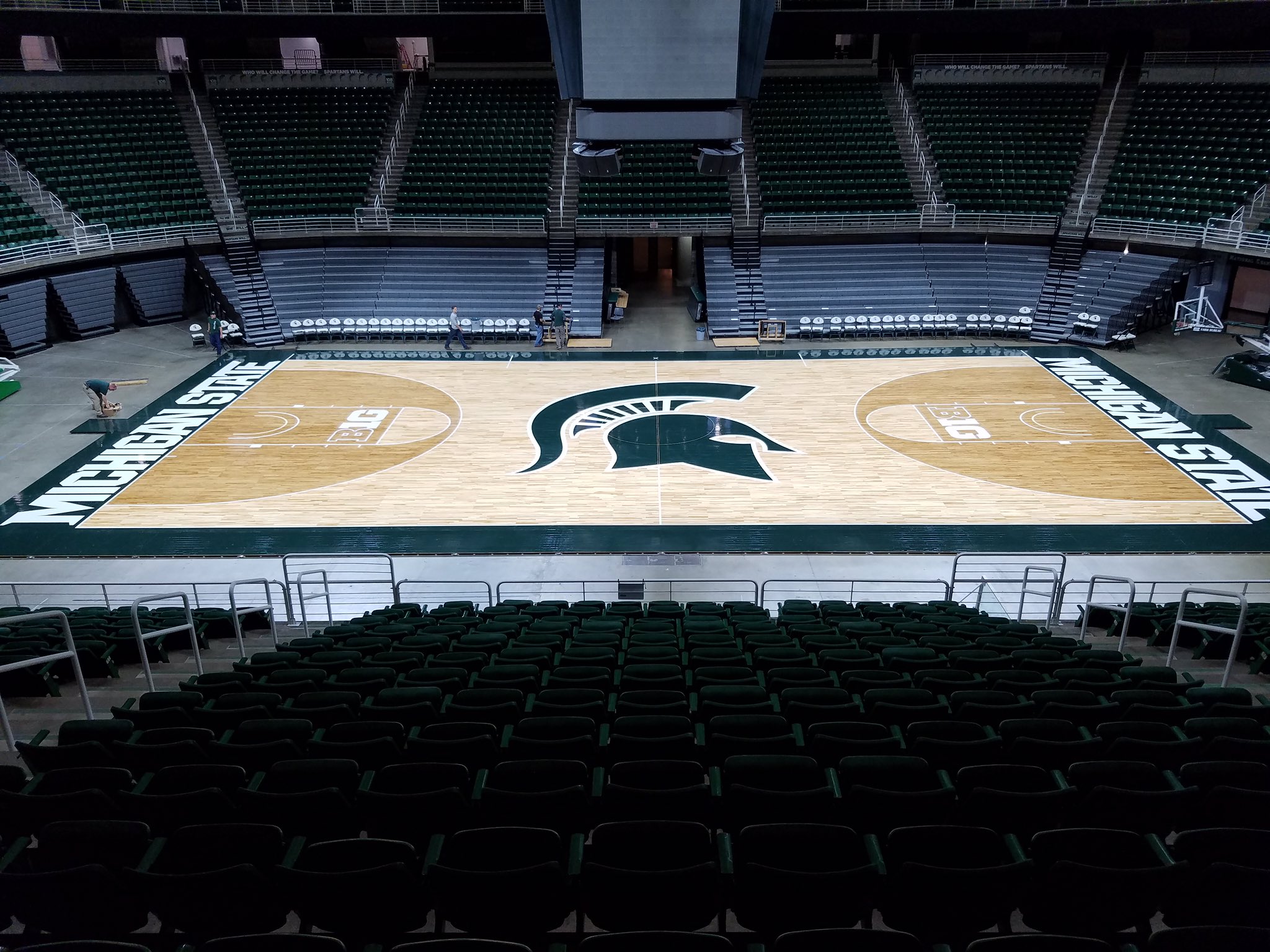

One way to capture a big-venue feel is to encircle the entire perimeter with seats. Multi-use arenas also require flexibility in seating. If these mid-size arenas are to be more flexible and multipurpose, videoboards become important as a way to switch out digital branding and other graphics based on individual sport and public focused events. Incorporating both still and digital graphics effectively is crucial. In a mid-sized arena, it’s hard to go too far with environmental branding. The goal remains for spectators to become fully immersed in the event with all their senses. One solution is to place larger video boards and scoreboards on two of the sides and to use technology to its fullest, incorporating event-focused variety into the digital video boards and ribbon boards. Higher-end sound systems go a long way as well. Some of these solutions can include an oversized main entry, impactful signage and wayfinding, large scale video technology, open and inviting layout, and other elements that create the same drama and fan experience.Ĭenter-hung scoreboards are typically too big and too expensive for a mid-size, multi-use venue. Architects have a number of options for replicating the “wow factor” of larger venues.

Replicating a big-arena environment at a third the size requires a different approach, but also calls for design elements employed in the bigger arenas.įor example, large arenas typically have multiple large entries, while the mid-size arena likely has only one main entry. Thorough evaluation of existing soil conditions and possible high water table can significant impact the design or even cause a new site location to be desired.ĭesigning a mid-size arena requires architects to depart from the large-arena mindset. The challenge here may be what is below the ground. Making a mid-size venue seem larger is a design challenge and requires experience and creativity.įor universal access, ideally, mid-size arenas are designed with the main concourse level with surrounding site by which spectators descend into a lower bowl. While there are clear advantages to mid-size arenas, spectators want the look, feel, taste and smell of a big one. In contrast, multiple smaller scale donors can fund a significant portion of the cost of a mid-size arena. The challenges of integrating a smaller venue with other campus buildings is much less of a problem than for larger facilities, and the costs of the exterior finish enclosure is more consistent with surrounding buildings is more achievable due the smaller scale.įinally, mid-size arenas can be more “donor-friendly.” Large venues typically require a big name and a big donor. Often, the sheer scale of mid-size arenas fits better into many campus environments. Because these buildings can be used continuously, a college or university can operate them much more efficiently. They often require a leaner staff, a smaller budget to build and operate, and are much more energy efficient than their larger cousins. Operating costs are another attractive feature of mid-size arenas.

And this holds true for numerous other events that a multi-use arena allows. Yet they find they can pack a mid-size arena for every event and that the energy level and experience is heightened, because fans are closer to the action. Most non-Division I schools – and even many Division I schools – struggle to fill large basketball arenas. Obviously, a 5,000- to 6,000-seat arena is easier to fill than a larger facility. While large 20,000-seat sports venues aren’t going away, mid-size venues provide advantages the big arenas do not in a time of budget constraints and the need for flexibility. The Covelli Arena project is indicative of a trend among colleges and universities toward mid-size, multi-use arenas that can serve the student body and surrounding community. What it will do is provide a home for wrestling, volleyball and gymnastics, while also allowing for lectures, concerts, banquets, academic college’s graduation, and similar campus events. The 3,800-seat Covelli Multi-Sport Arena at The Ohio State University will not take the place of the Schottenstein Center, where 19,500 can watch a basketball game.


 0 kommentar(er)
0 kommentar(er)
